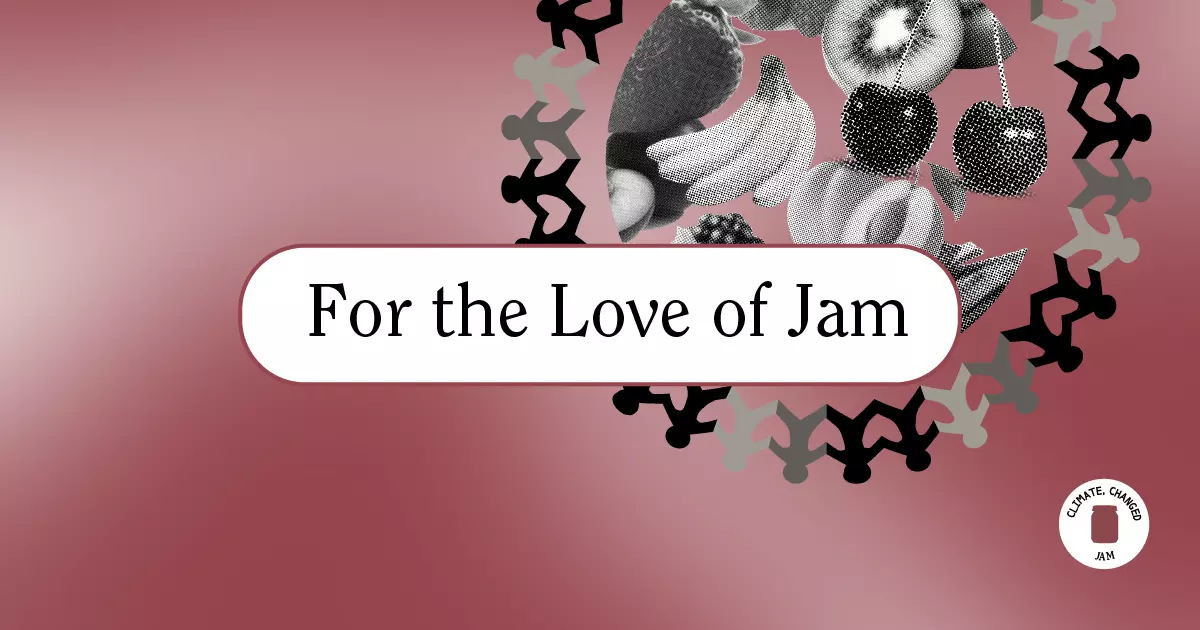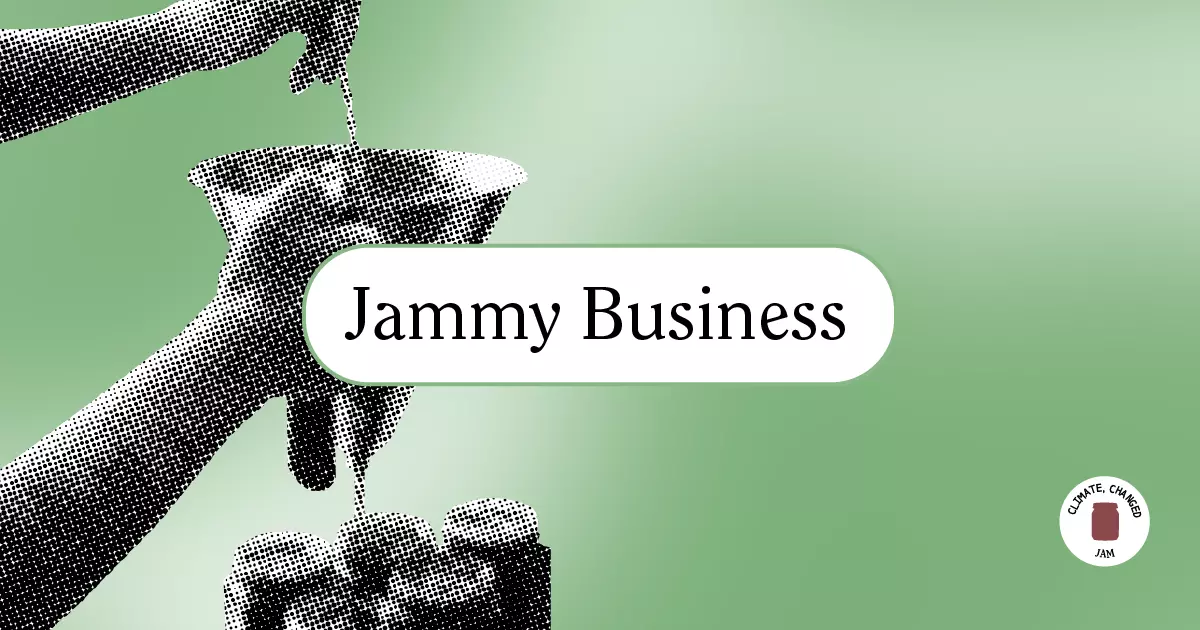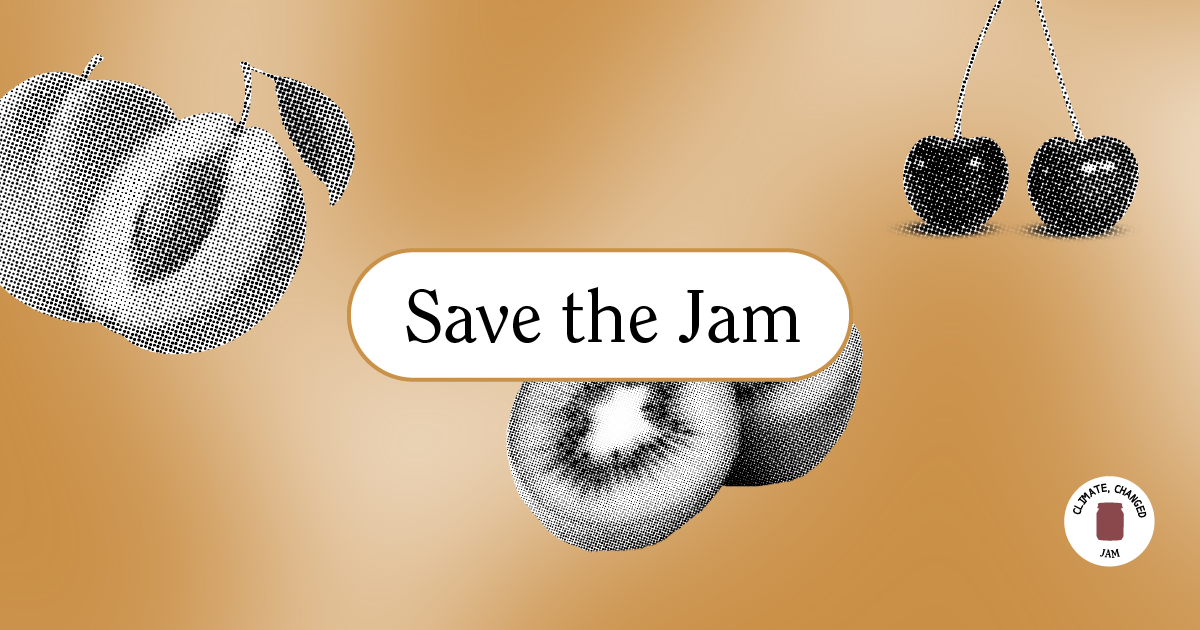INTERVIEW
For Chitra Agrawal, All Roads Lead to Achaar
WORDS BY SARAH COOKE
GRAPHICS BY CLARE LAGOMARSINO
PHOTOS COURTESY OF CHITRA AGRAWAL
MAY 20, 2021
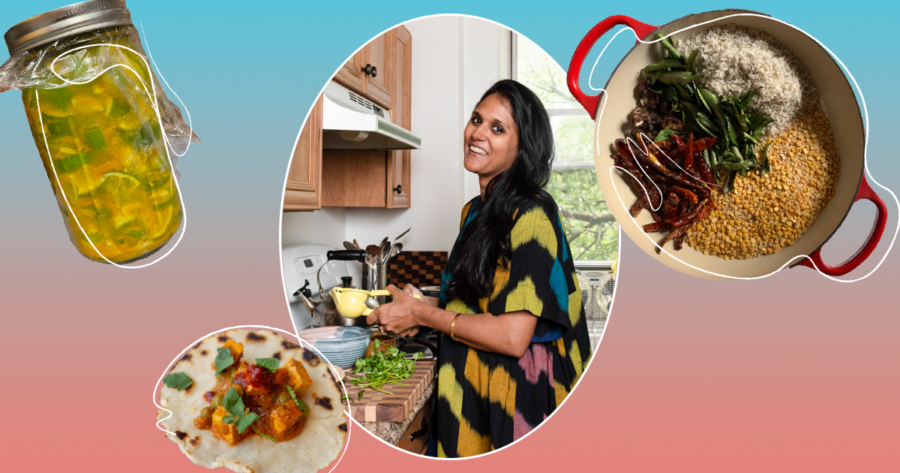
Center photo: Liz Clayman
“I began to see that the true value of acid is not its pucker, but rather, balance,” Samin Nosrat writes in Salt, Fat, Acid, Heat.“ “Acid grants the palate relief, and makes food more appealing by offering contrast.”
Acids are all around us—and, as Nosrat writes, hopefully in all that we eat. Where would we without vinegar, without lemons, or limes, or any citrus for that matter? In a sad, sad world, that’s where.
Chitra Agrawal knows this wisdom well. It’s at the root of Brooklyn Delhi, the company she cofounded in 2014 as an outgrowth of her love for achaar, an Indian condiment that she describes as “a flavor-packed condiment made from vegetables & fruits, aromatic spices and chili peppers.” On an early Monday morning, we talked about the myriad logistics of running a small business, what goes into educating Western consumers, and why Blogspot was so great.
This conversation was held on April 12, 2021 and has been edited and condensed for clarity.
In light of the devastating second wave of COVID-19 in India, Brooklyn Delhi is donating 50 percent of online sales at BrooklynDelhi.com to GiveIndia specifically to support the distribution of meals to families struggling with hunger during the second wave of COVID.
On your phone or short on time? Catch the snackable version on IG stories.
How does the Brooklyn Delhi of today differ from what you imagined, pre-pandemic, the Brooklyn Delhi of 2021 would be?
So much has changed. We’ve gotten so used to this type of living that to even try to go back to that time before... [Chitra and Sarah laugh.] It’s hard for me to even grasp.
But I’d say that from our perspective, people are cooking a lot more at home. And I also think that people are getting to be more interested in trying out new flavors, which I feel like for us has always been an uphill battle. Some of what we make is unfamiliar to a lot of American consumers, so it’s hard to say, like, “You need achaar in your life!” when people don’t even know what that is. [Both laugh.]
I don’t know if when things return to normal—and how soon they will—if this will stick with people, this type of curiosity and interest in learning more. I hope it does, but only time will tell.
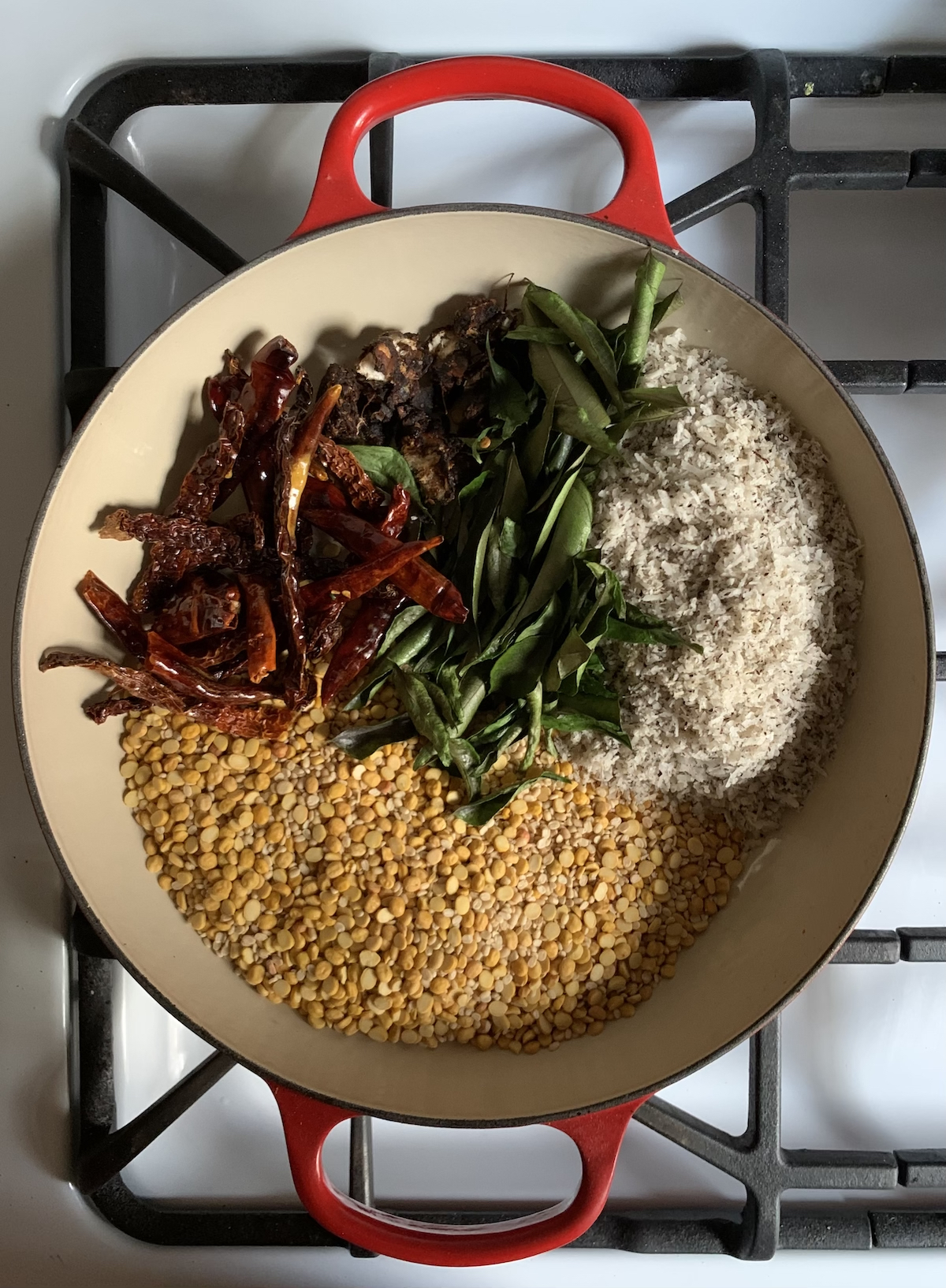
Roasting ingredients for spice blend
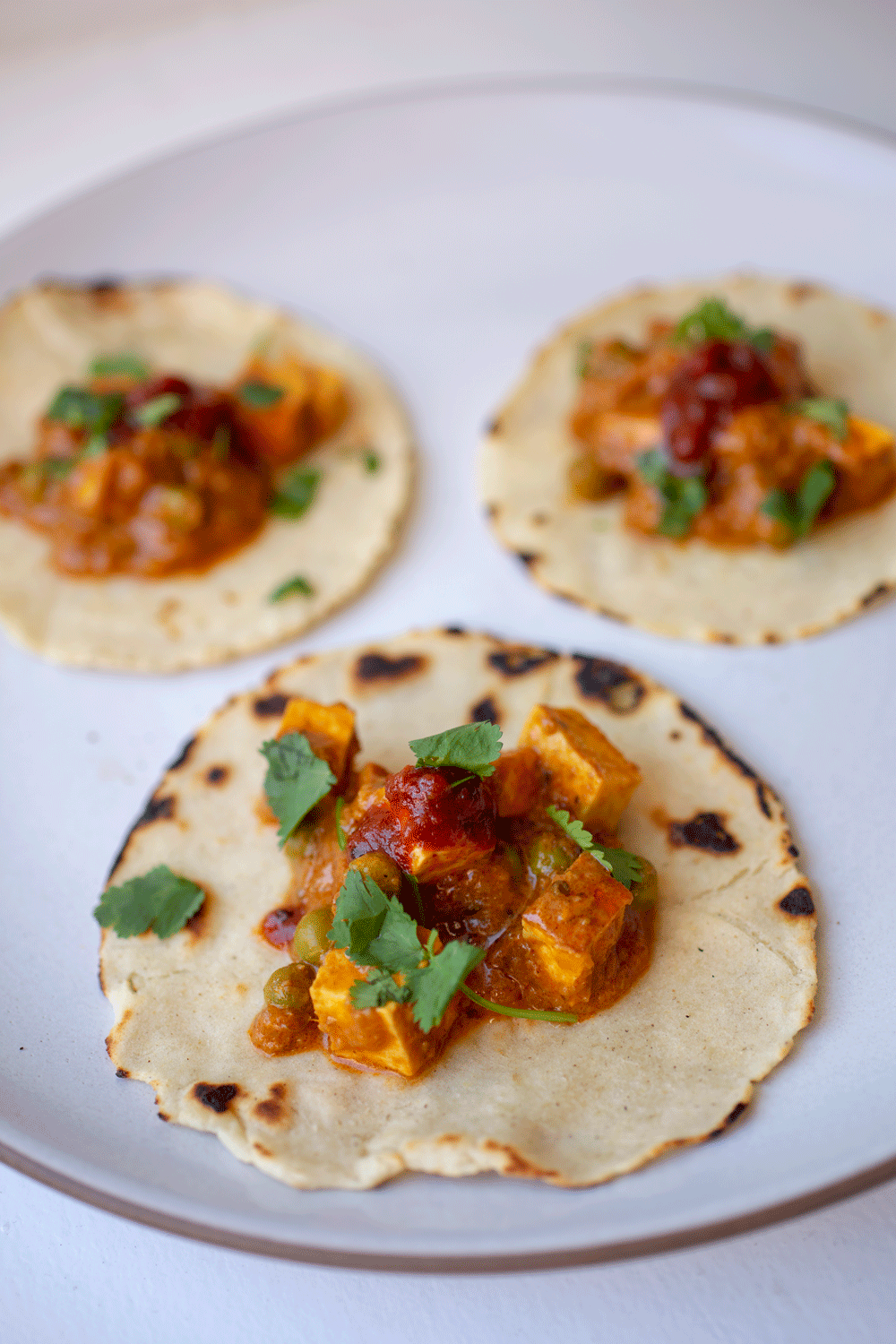
Paneer tacos with Brooklyn Delhi Tikka Masala Sauce and Tomato Achaar
For Diaspora Co., Sana Javeri Kadri mentioned they had grown something like 5x during the pandemic. Have you seen a growth for Brooklyn Dehli in direct-to-consumer (DTC) sales during the pandemic?
We sell our product direct to consumer on our website, but I’d say we don’t really have the infrastructure built up to effectively handle that type of business. We’re working on it, but it takes a lot of cash to do that. You have to have the ability to warehouse your product, have staff that will pack all of this, as well as just the shipping of glass; these are all very expensive costs of doing a mainly direct-to-consumer business.
For the most part, our products are premium in the sense of the international category, but they’re not to the point where people are willing to pay $15 or so for a product that they’re not really knowledgeable about to some degree.
We’ve just had so many issues with shipping and things like that with the warehouse we’re using, because we ship our products in glass—if a bottle of achaar breaks, and you receive that, it is a total mess [Chitra laughs]—and so a lot of what we try to do is reach customers at the store level, because I know that our products are going to reach those stores safely.
For us, it’s actually more cost effective, because we make the product, it gets picked up, and then it goes onto a shelf at a store. It seems counterintuitive, it’s kind of like, why would that be cheaper instead of sending it from our own warehouse? But as a smaller company, we just don’t have scale on that level. I would love to build that part of our business up, but I don’t have the capital to do it right now.
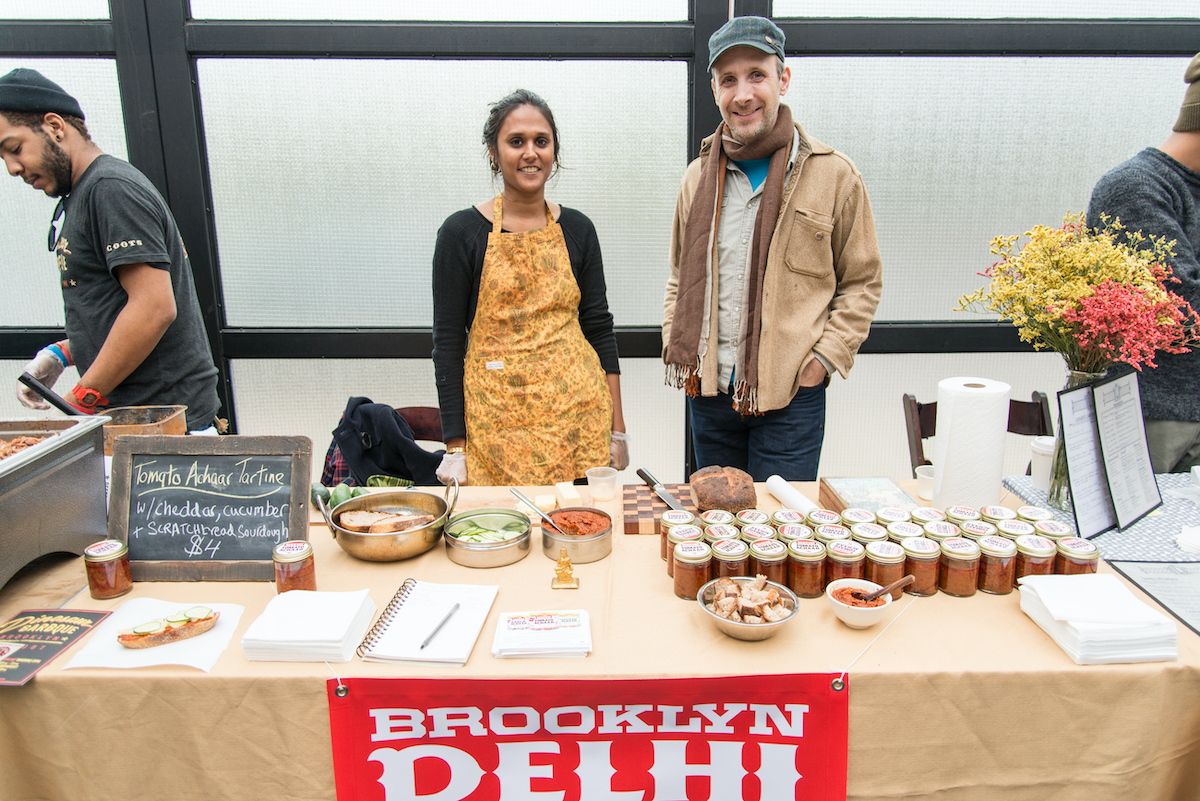
“Us selling Tomato Achaar at our first market in Brooklyn.
Our labels did not arrive in time so Ben had to design and print these labels that we put on the top of the bottles at the last minute!”
There has been so much on direct-to-consumer brands and their growth, and it feels like there’s a sexy idea of DTC, while going to grocery stores isn’t getting that press. But as you’re saying, it’s just a different way of reaching customers.
I was reading a couple features where you drew out the difference between customers who are motivated to purchase because they read something in a cookbook or see something in a YouTube cooking video, versus those who are in the grocery store and going through the different aisles, and maybe see something that catches their eyes.
Is that something you’re still seeing play out?
I think so. But I do think that because of this new interest in home cooking, people are definitely becoming a little bit more open to different types of products that they’re seeing on store shelves. And a lot of these stores are also getting online in a big way—a lot of the grocery store that is happening now is happening online, so that in itself is fostering a very different kind of shopping, I think, than when you’re in a store.
A few months ago, the Harris Teeter in my neighborhood started stocking a couple Brooklyn Delhi products, and I was so excited to see that. I noticed that unlike a lot of other products, there isn’t a Harris Teeter store brand version of achaar. Brooklyn Delhi is the only achaar on the shelf.
The experience of how people shop for groceries, both now and in the future, is something I’m so curious about. How people experience the space of a grocery store, what people come in for: Is it going to be back to people strolling and meandering in the grocery store? The psychological experience of grocery shopping is probably something I spend way too much time thinking about. [Sarah laughs.]
It’s not even two different types of customers; it’s kind of how people respond to the space that they’re in. For someone who was taking a cooking class with me, they are really excited and looking to take in as much information as they can. They’re curious, versus maybe that person who is going into the grocery store and knows what they get every week—they’re just not in that zone.
I think it’s going to be interesting, when things return closer to what they were before, to see how people behave in those spaces again. Are they going to come back to that space, having this new kind of mentality? Or are they going to stick to buying those specialty items online?
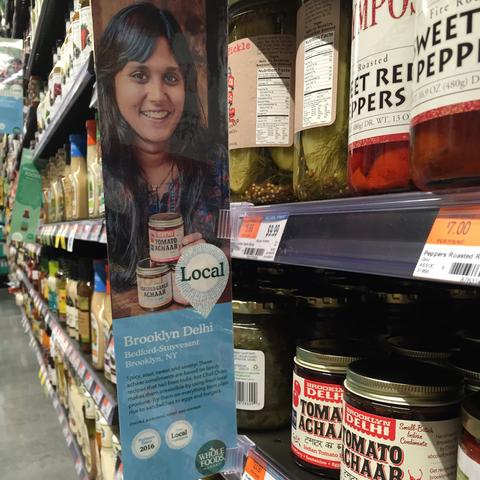
A lot of times, we get customers that are like, “I’m gonna buy from your online store to support you.” And I say, you know that’s fine and everything, but you can actually buy our product for less if you buy it from a Whole Foods. That’s because there’s not as much overhead for us when we’re just making it and a truck picks it up for a store. When we make it for the online store, I have to ship it on a pallet to a warehouse, I have to pay people to pack and ship it, then pay the postal carrier to ship it to your house.
There’s a lot of waste, also, that occurs with the boxes and everything like that. It’s not efficient from an environmental standpoint either. So I’m telling people, “Hey, I may not make as much money but for yourself, go to a store and buy it.” [Chitra laughs.]
I go back to all of the articles and reports I’ve seen about DTC, and so much of it has been about cutting out the middlemen, so to speak—you have a direct relationship with the brand. But what I’m hearing from you is that there’s so much work involved in order to have this.
Right. It also is about the type of product you’re selling. For instance, heavy glass products? They are probably not the best thing to ship across the country using UPS as a postal service. [Both laugh.] Not the best.
There are certain products that are not available in grocery stores. I’m always playing with new recipes and things that could become some new products that will probably only be available on our website. So in that instance, there’s really no other option there; it’s only on our website.
We’ve been in business now for seven years, and we’re still the only American-made achaar sold in Western markets. To some degree, it’s really on our shoulders to build demand, and that takes time, especially if you’re a small food business that has limited resources.
From a lot of brands that I know, even if they start at the direct-to-consumer level, there is some type of plan to also take it to the grocery store, which may not make any sense for the product that you’re selling. So I think it’s really a case by case basis in the way that you look at the distribution of your products.
Totally. Coming into this interview, I thought about scale—you sell your products through Amazon, through Walmart; they’re in the Blue Apron meal kit, they’re in my neighborhood Harris Teeter—and I was like, Wow, all the logistics of that must be so extensive.
But what I’m hearing from you is that compared to the logistics and overhead of DTC, it’s actually simpler to distribute through grocery stores, depending on what your product and company is.
I’ve looked at every angle of this where we’ve thought about distribution of our products, and it’s just that there’s different middlemen to each one. There are still different people taking a cut of this product and adding to your cuts.
As I'm looking more into the direct to consumer business, there is also the cost of acquiring a customer through various means—PR, ad spend, influencer campaigns, etc.— which is in addition to the cost of freighting product to a warehouse, warehousing product, hiring employees to pack and ship product, shipping materials and postage.
This can be quite costly, as opposed to selling to a store that already has a built-in base of customers. For the type of product that we sell, which is not as known [in America], the barrier to entry is high for this channel, which explains why many companies that are also selling products that are not as mainstream look to investors to get their businesses going if they are not personally wealthy.
The advantage to being a direct to consumer business is that you own your customer base and their info and are not at the whim of a store taking you off the shelf. But it is not a luxury that every company can afford.
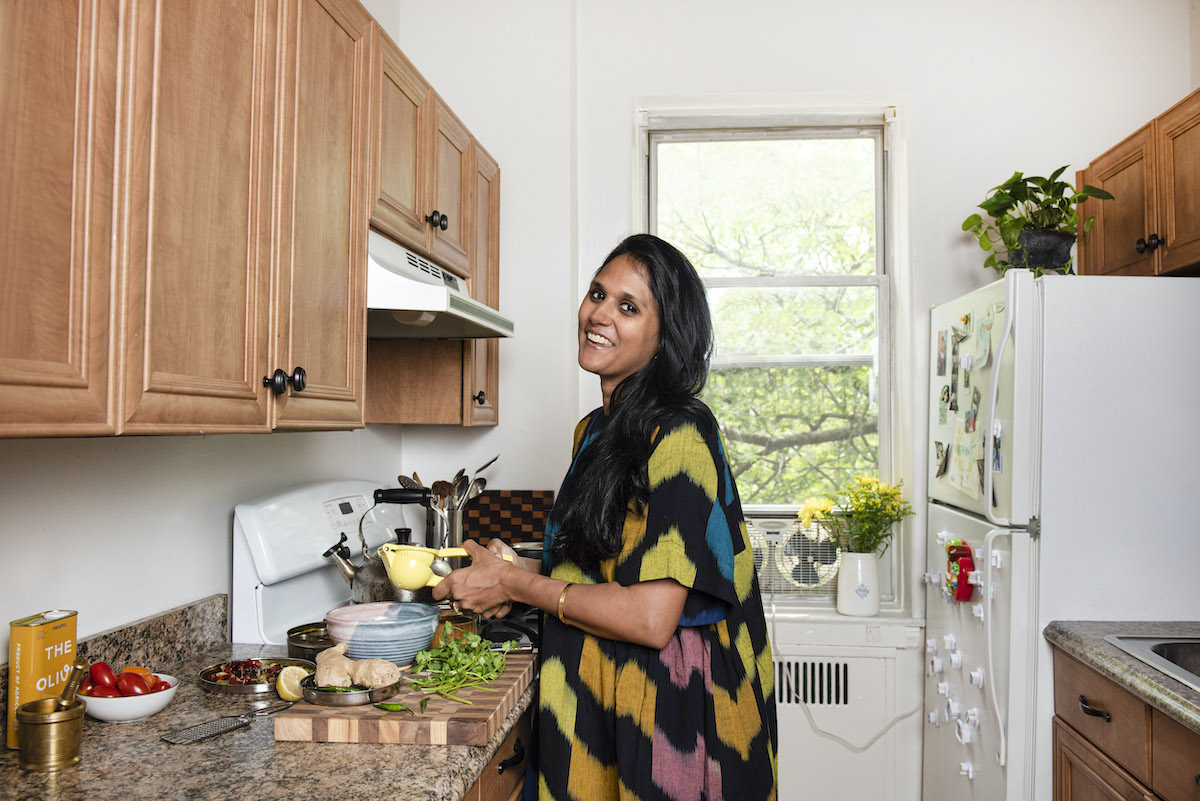
Photo: Liz Clayman
As we’ve been talking, I’ve wondered about what you’re saying about having to market a product to people who might not be familiar with it, when the reality is that obviously in India, achaar is an incredibly well-known product. I can imagine that being both an opportunity, but also a challenge—it sounds like there’s some pretty extensive legwork to bring people in the door—and maybe at times a heavy weight?
I think that with all the things that I’ve done—writing the blog and teaching cooking classes—my mission has always been to widen this dialogue around Indian cuisine, and achaar was a way to do it. I mean, we could have come out and said, “This is pickle,” right, but it was a conscious decision to name it achaar, because there’s an educational component.
What we didn’t know was that in doing that, we were creating our own category. When we started this business, I was very naive in many ways, because for a lot of people that get into the business, you have a product that you created and you put it out there and see what happens.
We started selling at local markets and at a grassroots level, but I have to say, we came close to closing our doors, because at the same time we were getting traction on this local level, it wasn’t really enough to say this was a viable business. We would get written up in press, and I think a lot of people would think, “Oh, you’re gaining this critical mass,” but in so many aspects, that couldn’t have been further from the truth.
When you’re first in the market with a product that’s really unknown to the mainstream, there’s a really long road to adoption by consumers. We’ve been in business now for seven years, and we’re still the only American-made achaar sold in Western markets. [Chitra laughs.] To some degree, it’s really on our shoulders to build demand, and that takes time, especially if you’re a small food business that has limited resources.
We’re basically always on the hunt to find different partners that are going to amplify those efforts to bring these flavors to a wider audience. But it’s a slow grow. That’s where we’ve found allies in places like Blue Apron and Whole Foods, who are advocating for products like our achaar. That goes back to that conversation about getting in front of people in those instances where they are open to learning about new things—and that’s where Blue Apron really has helped us, because people are looking to Blue Apron to discover something new.
For achaar to be in a box like that is a sweet spot for us, because people then are educated on how to use it, what it tastes like. A lot of people don’t even have a reference with where to begin with what it is.
We could have come out and said, “This is pickle,” but it was a conscious decision to name it achaar, because there’s an educational component.
The concept of a reference point is so potent. When you see recipes that are like, “This is the pancake of X cuisine!” and it’s like, maybe it’s not. But I think it’s tricky, because how do you work with people’s footholds and where they’re coming from, when maybe where they’re coming from is knowing absolutely nothing?
Even the way we designed our packaging, it has that ticker tape that also reminds me of a Brooklyn deli, where it’s like “We make all these things!” [Both laugh.] We use the label as a way to educate people on the different ways that you could use the achaar, and that label is jam-packed, because we’re trying to explain how to use achaar and what it is.
We’re trying to educate people to say, “Hey use this in this instance or use it on a sandwich or use it on this,” and try to get people to look at it not just in the Indian context, too, but from a flavor point of view more so. I don’t know if we were successful.
In many ways, we went back to the traditional by releasing the simmer sauces, because traditionally, you eat achaar with rice and dal or rice and curry. On the simmer sauce labels, we found that’s another place to educate people about achaar. It always goes back to the achaar: How can we get people to eat achaar? The simmer sauces became that reference point, basically.
I mean, I emailed you that I’m obsessed with the roasted garlic achaar. It’s so good. And I love this idea of building out a garden where the main focal point is the achaar. This is building out the idea of a plate, almost, and putting it all together for consumers.
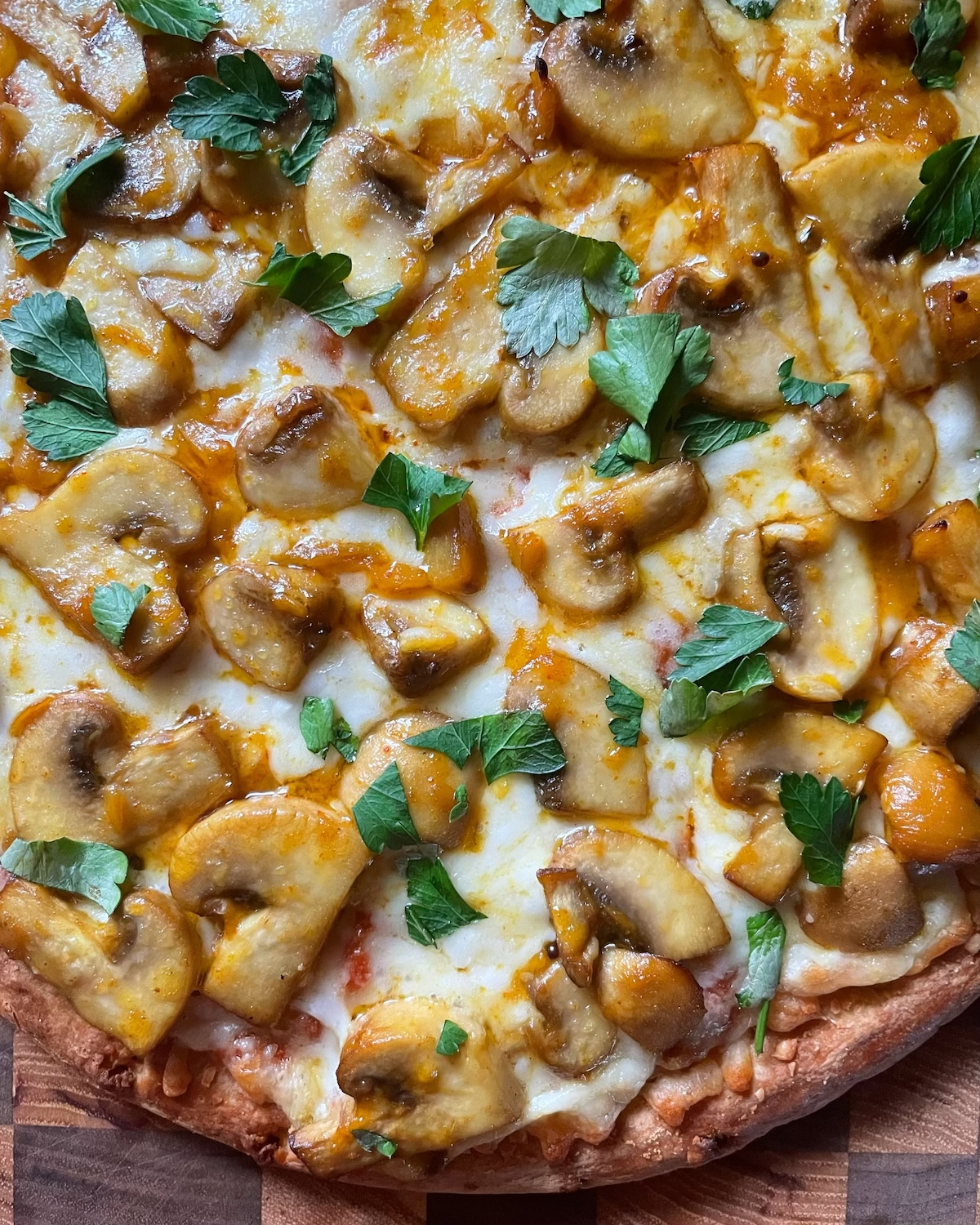
Roasted garlic achaar mushroom pizza
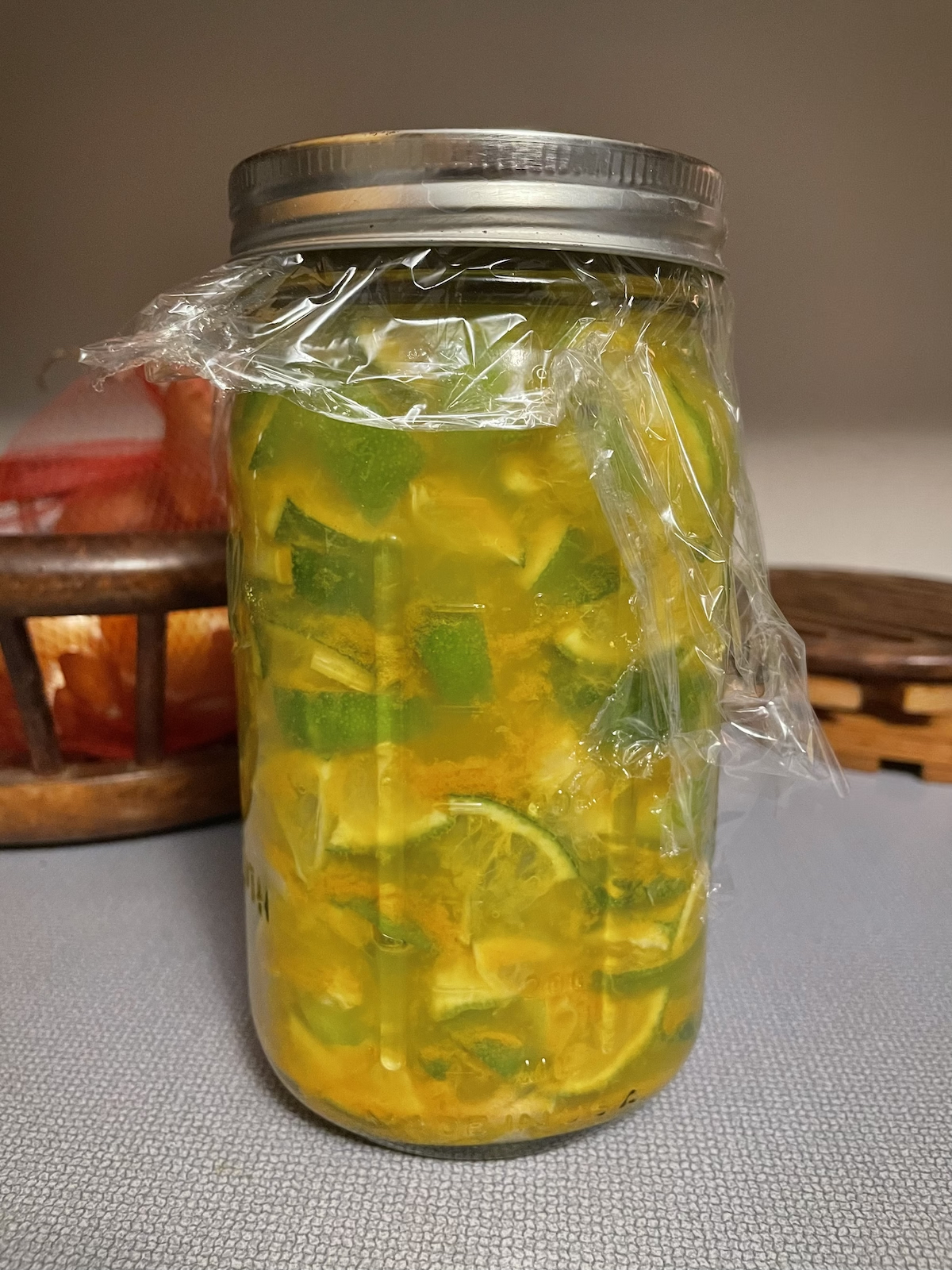
Fermenting limes for lime achaar
I was reading some of the old blog posts you did, and your voice is so great. It feels like you’re talking to the reader over a cup of chai or coffee. Do you miss blogging? And does writing play a role in your life right now?
I definitely miss it. I feel like my work in food was really a passion project—I had a day job, so it was the most fun for me. After several years of doing both things, I jumped off into food and started Brooklyn Delhi and also wrote a cookbook.
A lot of bloggers that were blogging on the regular before are now using Instagram as a new medium to share more about themselves and the food that they’re making. I feel like the writing piece of it is something that I still have not given up, but I’m using this different medium to really make sense of what it is that I’m trying to do, because I think that’s evolving.
The brand has changed as I have grown up too, to some degree, and so I think the writing piece of it, whether it’s on a blog or Instagram, is still kind of a self-exploratory space, but it may not be on Blogspot [Chitra laughs] where I started.
I have such a nostalgia for that time when blogs were on Blogspot. Even compared to what we’re seeing with newsletters right now, it just felt like there was a real sense of community. It always felt like with blogs, people were welcoming you into their living room. I miss that.
I do too! You know, a lot of my good friends are food bloggers that I met through food blogging: Cathy Erway, Diana Kuan, Nik Sharma. All of these people were bloggers, and now they are some of my really great friends. I think that the blog world really spilled over into what was happening in Brooklyn at that time, too.
It was such a cool, exciting time for home cooks, where we would get out and meet each other. I used to do a lot of cook-offs and cooking classes, and that was a way to really connect with community. It was not just creating these recipes and exploring yourself; it was also about collaborating and meeting other people and understanding where other people were coming from. I think that is really what got me excited about food, more so than just documenting my family’s recipes on the blog.
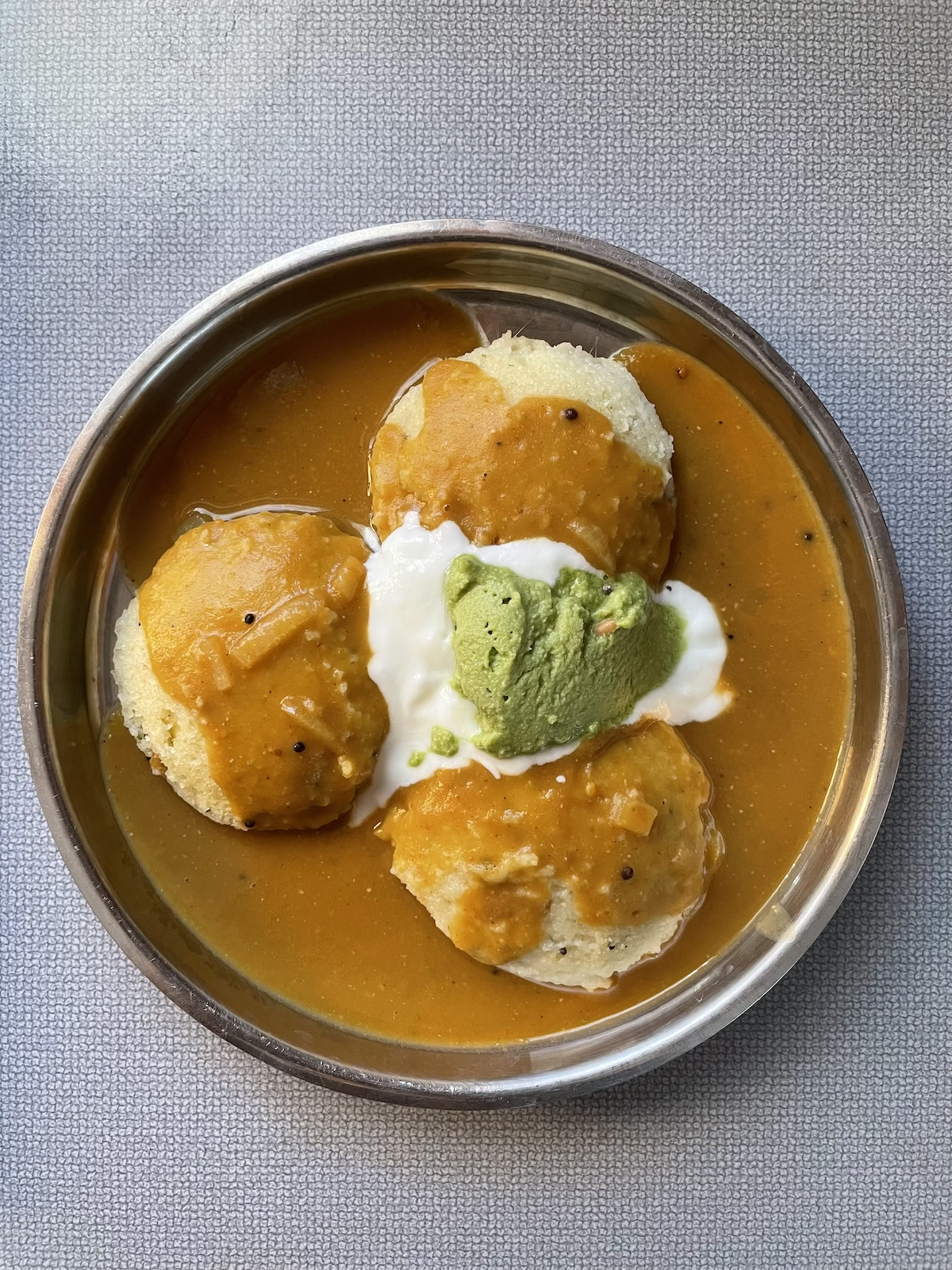
"Idli, sambar and coconut chutney recipe from my cookbook.
My kids love it."

Spending time outside with the kids
Do you feel any comparable community or communal building space since that blogging and Brooklyn time period?
I’m a part of a lot of private communities with other food makers from Brooklyn. I was part of a group that would meet monthly, where we would talk about what was going on in our businesses and needing support or giving support to people there. Now that a lot of people are all over the place and not able to meet in person, it has taken an online form. We have a very informal WhatsApp. [Both laugh.] I check in every day, and I may ask a question or answer somebody’s question, but we are staying connected in these different types of ways now.
Group texts, they’re life savers. I love them. It’s the best space I have, because I can just text pictures of dogs [Chitra laughs] or ask for advice on this really serious thing. Just having people to do that gut check, where you know they’ve got you, they can take you at whatever you’re going through, but they can also make you laugh. It’s that connection.
And it’s outside the realm of social media too, right, where there is a little bit of a kind of this performance that happens, which is just the nature of what social media is. To have these types of private ways to communicate with people that you’re close to—you can be real in those spaces, which is almost a relief.
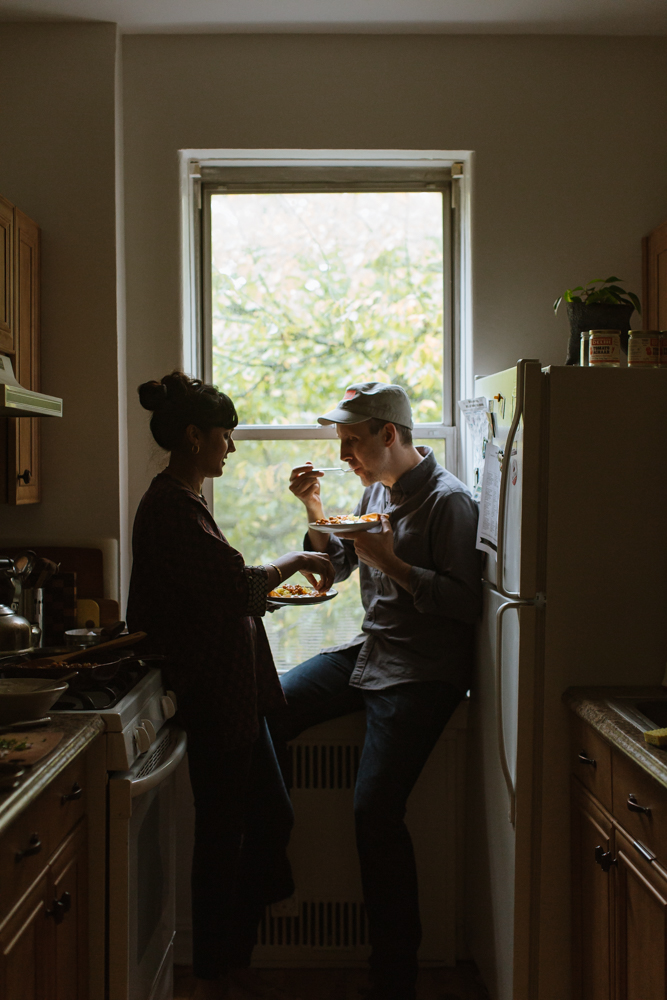
“Ben and I eating lunch. We eat lunch together everyday." Photo: Luisa Brimble
I’m on Twitter for reasons of being freelance, but I notice that if I stay on it too long, I get more reactive to people in my real life. So I’m very wary of it. I have to limit my exposure.
It’s a minefield. [Both laugh.]
I always love to end with a fun question. This is about okra: I saw that you think it’s art. I agree. It’s so beautiful: the spirals, the texture. What is the most beautiful thing you either have made, or regularly make, with okra?
I love okra in so many different ways, but this is an easier recipe that I can make. [Chitra laughs.] I make an okra raita. What I love about it is that you’re still frying up the okra, and you’re maintaining that cool geometric shape, because you’ve cut it into the little discs. I mix part of the okra into the yogurt and then top it with the crispy pieces right before we eat it.
I just love it, because okra raita is something that a lot of people don’t make. I had also written a recipe to go in my cookbook, but it was one of the ones that didn’t make it in.
But it’s like two of the best things together! [Both laugh.]
I think it was a space issue. I have way too many raitas in there. [Chitra laughs.]
I don't think there can ever be too many raitas. How often do you make that dish?
We eat so much yogurt here, so I feel like that’s a really great seasonal one when you get the fresh okra, like at the farmer’s market. I don’t know what it is, but okra can be very sad at the grocery store. [Sarah laughs.] The Indian markets have some really great okra; I think it’s because there are more okra buyers there. You can get nice okra there. I feel like it’s best to buy it at the farmer’s market when it’s in season, but if not...I don’t really think that you should buy them at a conventional grocery store. [Chitra laughs.]
Sign up for Currantly, our newsletter delivering original food stories and news analysis, with surprise treats of freshly curated recipes and product drops. Think of it as your monthlyish digest to deepen your stance on food issues and be creatively inspired.
Bios
Sarah Cooke is a freelance writer and reporter based in Washington, D.C. Her reporting, which explores the intersection of food, culture, and power, has appeared in DCist, Eater DC, and Washington City Paper.
Chitra Agrawal is cofounder of Brooklyn Delhi and author of Vibrant India: Fresh Vegetarian Recipes from Bangalore to Brooklyn.
Sign up for Currantly, our monthlyish newsletter delivering original food stories and news analysis, plus fresh curations of recipes and product drops.
